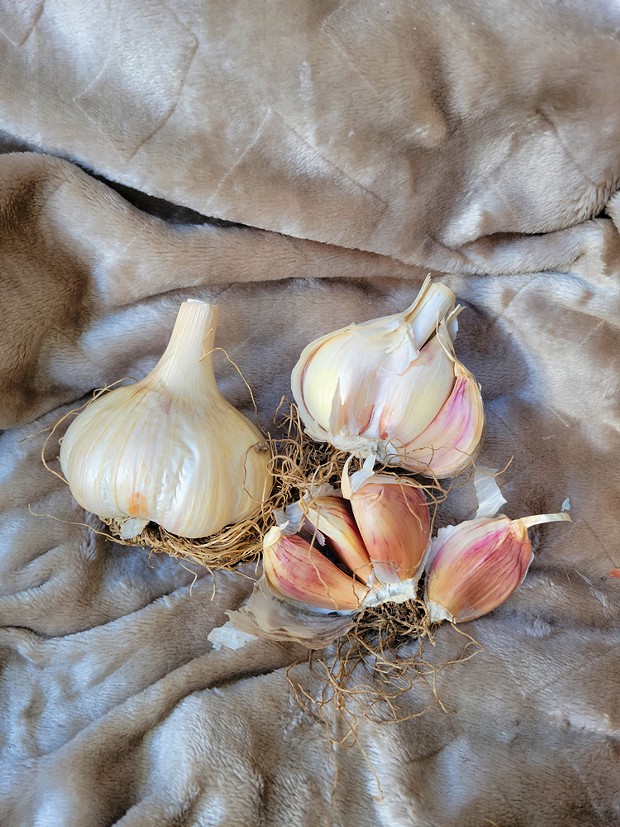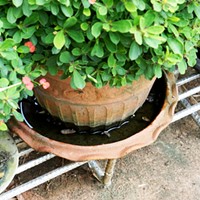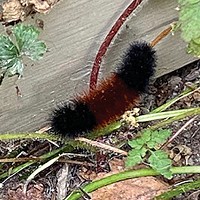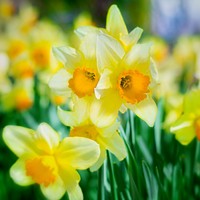
Bulbs at your local garden shop beat the scrawny dollar store ones every time.
[
{
"name": "Top Stories Video Pair",
"insertPoint": "7",
"component": "17087298",
"parentWrapperClass": "fdn-ads-inline-content-block",
"requiredCountToDisplay": "1"
}
]
Now that we've harvested the fruits of our labor and cleaned up the garden — you have cleaned up the garden from spent plant debris and fallen apples, right? — it's time to think ahead to what to plant. I know, I know, we're just barely into autumn and here I am talking spring. But a little planning means you'll not only have gorgeous flowers to look forward to, but some tasty garlic to harvest in the summer. I'm talking bulbs, folks. Bulbs of all sorts.
Let's start with the spring flowering bulbs: tulips, daffodils, freesia, ranunculus and the like. Many nurseries and big box stores have received their shipments of these beauties, so this is the time to buy them. You can also order online from quite a few vendors. When it comes to bulbs, this is one of those few areas in life where bigger really is better. The larger the bulb, the bigger the flower. I've seen some bulbs in the dollar stores that aren't worth the dollar you spend. They're the dregs from the suppliers, who save those giant bulbs for the catalogs or places like Costco. Save your dollar and get some that will actually grow a flower that doesn't require a magnifying glass to see.
Most bulbs you buy will have planting instructions on the package somewhere. It's an especially good idea to follow the planting depth suggestion.
I usually mix a little bone meal into the planting hole, as this helps feed the bulb over the winter. If you have trouble with raccoons in your area, however, you may want to skip that step, as I've learned raccoons will dig up the bulbs to get to the bone meal. Another pest to be aware of is the gopher, the gardener's nemesis. They love, love, love tulips, but will leave daffodils alone. If you want to enjoy some tulips, you can either put them in pots or use some gopher wire/mesh to put down before planting the bulbs. You can put your tulips in the fridge about six weeks before planting to give them a boost — they prefer being chilled but I've only done this once, and the non-chilled ones still turned out beautifully. Another method I've read about planting bulbs is to toss them into a prepared bed and plant them where they land. Masses of single colors can also be eye-catching. Plant them before the end of November, if you can. If our rainfall is truly going to be more substantial this year, you want to plant when the ground isn't a muddy mess.
Next up is one of my favorite bulbs to plant: garlic. Garlic is one of the easiest things to plant pretty much everywhere, coastal, inland, hot or cold. Garlic is an easy crop if you follow a few important steps.
As with spring flowering bulbs, bigger is definitely better when it comes to garlic. You're going to separate each clove, saving as much of the papery wrapping as possible. Save the tiny little cloves for cooking. Small garlic cloves make small heads of garlic.
Prepare the soil by loosening it to a depth of 8 inches and add a slow-release granular fertilizer, if you want to give it some extra love. Separate the cloves and make sure you plant them pointy side up. After you've separated the cloves, it can be hard to see where the root was. Plant them about 4 to 7 inches apart, depending on the type of garlic. I know it's tempting to plant them closer together but you want to give them enough room to grow into robust heads. I try to plant my garlic before the end of October. Talking with some farmer friends, some of them like to plant when the moon is waning, which helps with better root growth. Water gently after covering the bulbs, then put a nice layer of straw over the top. Straw, mind you, not hay. Garlic hates competition from weeds, so make sure you've got straw to mulch them with. A friend of mine mulches with newspaper, then places strips of seaweed between the rows to act as a fertilizer. There's more than one way to mulch garlic, so ask around.
Other than making sure that weeds don't take over your garlic bed, once the winter rains start, you're pretty much free to ignore the garlic. You may see green shoots come up before it gets really cold but this isn't a problem.
Just as with tulips, gophers love garlic. I've had them wipe out an entire raised bed where the wire underneath had rusted. Take care to plant them in a spot where you have put down either hardware cloth or mesh first. You can plant garlic in pots but make sure to leave enough space between each clove.
Garlic heads can be purchased at our local farmers markets right now, at nurseries very soon or from seed catalogs. There are literally hundreds of varieties of garlic, one to please every palette, from mild (California white falls under this category and is the one you usually see in the grocery store because it stores well, but the flavor is rather bland to my taste) to very spicy. You also have to decide if you want to plant hardneck or softneck. Softneck is the kind you can braid and, in my experience, tends to keep a little longer than the hardneck. Either way, keep an eye on those gophers.
Julia Graham-Whitt (she/her) is owner and operator of the landscaping business Two Green Thumbs.
Speaking of...
-

Gardening in the Gloom
Jul 6, 2023 -

Cleaning Up the Garden
Sep 29, 2022 -

Garden-y Things Happening This Week
Mar 26, 2021 - More »
more from the author
-
Working it Out in the Garden
- Jan 18, 2024
-
Winter Planting for Future Color
- Dec 21, 2023
-
Equinoctial To-Do and Native Plants
- Sep 21, 2023
- More »































